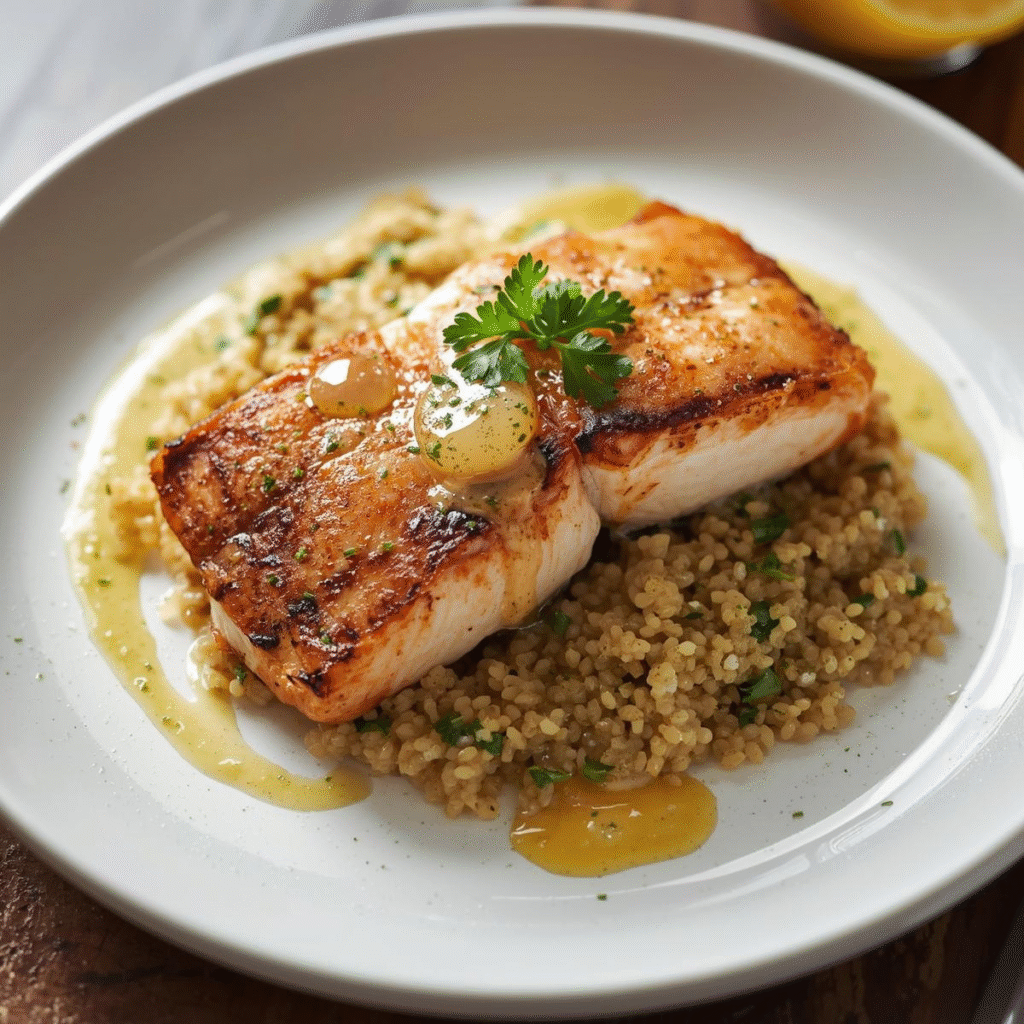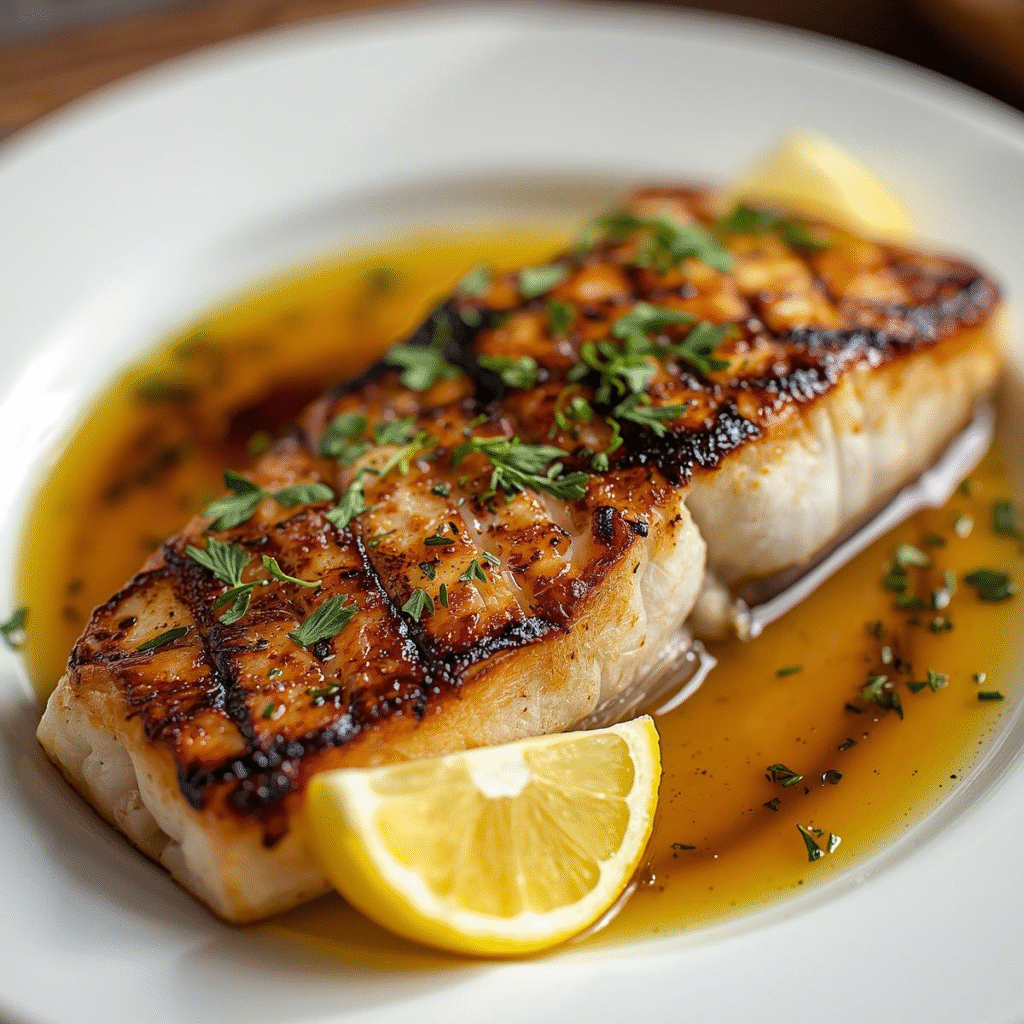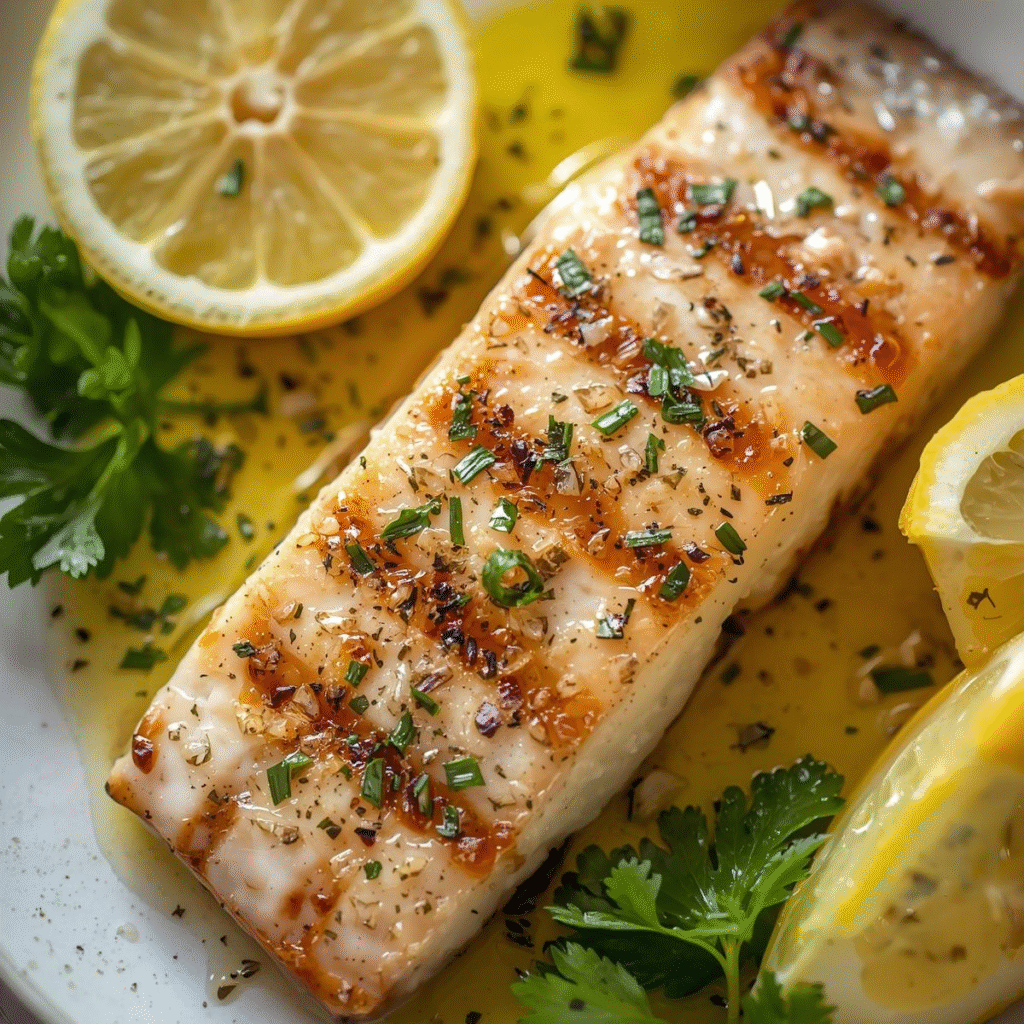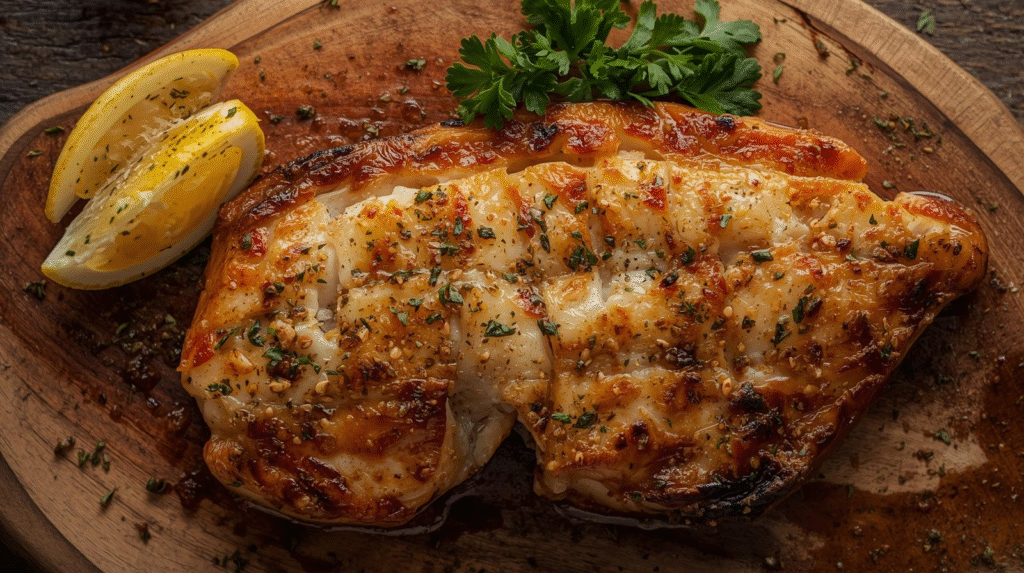If you’ve ever stared at the seafood section and skipped the swordfish because it “looked too fancy” or “too hard to cook,” I know exactly how you feel. That was me a few years ago. But one day, I gave it a try, and let me tell you—I was shocked. Swordfish is one of the easiest, tastiest, and most rewarding fish you’ll ever cook. It tastes rich, cooks fast, and honestly makes you look like a pro chef without sweating in the kitchen.
I’m going to share how I make my go-to swordfish recipe that turns any dinner into something special. Trust me, once you try it, you’ll never look at salmon the same way again.
Why Swordfish Is Perfect for Beginners and Food Lovers
Swordfish is known as the “steak of the sea.” That’s not just a nickname—it’s a fact. Unlike delicate fish like tilapia or cod that flake apart, swordfish has a meaty texture that feels like cutting into a juicy steak. It’s hearty, satisfying, and doesn’t fall apart when you cook it.
The flavor is mild but slightly sweet, so it pairs beautifully with bold ingredients like garlic, lemon, butter, and herbs. Plus, it’s naturally low in fat and high in protein, making it a healthy choice.
According to the USDA, a 3-ounce serving of swordfish packs around 20 grams of protein with just 1 gram of fat. That’s leaner than chicken breast but with twice the flavor.
And the best part? It cooks in under 15 minutes. Yes, you read that right. This is the kind of recipe that saves you on busy weeknights while still wowing your family or guests.

Ingredients You’ll Need
Here’s what I use for my easy swordfish recipe. You probably have most of these in your kitchen already.
- 2 fresh swordfish steaks (about 1 inch thick)
- 2 tablespoons olive oil
- 2 tablespoons unsalted butter
- 3 cloves garlic, minced
- Juice of 1 lemon (plus extra slices for garnish)
- 1 tablespoon fresh parsley, chopped
- Salt and black pepper to taste
- A pinch of red pepper flakes (optional, for a little kick)
That’s it. Simple, everyday ingredients that bring out swordfish’s natural beauty without covering it up.

How to Choose the Best Swordfish
Before we cook, let me share something I learned the hard way: freshness is everything. The first time I tried swordfish, I bought it without knowing what to look for, and it ended up dry and tasteless. Here’s what you should check:
- Color: Swordfish steaks should be off-white, beige, or light pink—not brown or dull.
- Smell: It should smell like the ocean, not “fishy.” If it makes you wrinkle your nose, skip it.
- Texture: It should look firm and slightly shiny. If it feels mushy, it’s not fresh.
Pro tip: If fresh swordfish isn’t available, frozen is fine. Just thaw it overnight in the fridge.
Step-by-Step Cooking Instructions
This is the fun part. Cooking swordfish is way easier than you think. I’ll break it down step by step.
Step 1: Season the Steaks
Pat your swordfish steaks dry with a paper towel. This helps them sear better. Then rub them with olive oil, salt, and pepper. That’s the base layer of flavor.
Step 2: Heat the Pan
Grab a heavy skillet (cast iron works best). Heat it over medium-high until it’s hot but not smoking. Add olive oil and swirl it around.
Step 3: Sear the Swordfish
Lay the swordfish steaks in the pan. Don’t move them for about 4–5 minutes. You’ll see a golden crust forming—that’s where the magic happens. Flip and cook the other side for another 3–4 minutes.
Step 4: Add Butter and Garlic
When the fish is almost done, toss in butter and garlic. Tilt the pan and spoon that buttery goodness over the steaks. This step makes the swordfish juicy, rich, and irresistible.
Step 5: Finish with Lemon and Parsley
Squeeze fresh lemon juice over the fish, sprinkle parsley, and you’re done. That’s it. Five steps to a restaurant-quality meal in your kitchen.
How to Tell If Swordfish Is Done
Here’s the tricky part most people worry about—but don’t. Swordfish is thick, so you want it cooked through but still juicy.
- The flesh should be opaque, not translucent.
- It should flake slightly when you press it with a fork, but not fall apart.
- Internal temperature should be around 145°F (use a meat thermometer if you have one).
Remember, swordfish continues cooking for a few minutes after you take it off the heat. I usually pull it when it’s just barely cooked in the center.
What to Serve with Swordfish
Swordfish is so versatile, you can dress it up or keep it casual. Here are some of my favorite pairings:
- Roasted vegetables: Zucchini, asparagus, or bell peppers bring out the freshness.
- Garlic mashed potatoes: Creamy and comforting, they balance the lean fish.
- Rice or quinoa: A light grain keeps the meal filling but healthy.
- Fresh salad: Something crisp with vinaigrette cuts through the richness.
And don’t forget a chilled glass of white wine—sauvignon blanc or chardonnay works like a dream.

Why You’ll Love This Recipe
Here’s why this recipe has become a staple in my kitchen:
- It’s fast—ready in under 20 minutes.
- It’s impressive—looks like fine dining but takes minimal effort.
- It’s healthy—low fat, high protein, and packed with nutrients.
- It’s versatile—works for weeknight dinners or fancy date nights.
Every time I make this, someone at the table says, “Wow, you made this at home?” And that reaction never gets old.
Tips and Tricks I’ve Learned
- Don’t overcook swordfish—it’s the number one mistake. Keep it juicy.
- A cast iron skillet gives the best sear, but stainless steel works too.
- If you like bold flavors, try adding capers or olives to the butter sauce.
- For grilling, brush the steaks with oil and cook 4–5 minutes per side. The smoky flavor is incredible.
Common Mistakes to Avoid
- Cooking on low heat: You’ll miss that golden crust. High heat is your friend.
- Skipping the butter: Olive oil alone works, but butter takes it to the next level.
- Not resting the fish: Letting it rest for 2 minutes keeps the juices inside.
Final Thoughts
When I first cooked swordfish, I thought it would be complicated, but it turned out to be one of the simplest recipes I know. This dish has become my secret weapon whenever I want to impress without spending hours in the kitchen.
If you’ve been intimidated by swordfish, this is your sign to give it a try. You’ll be surprised at how easy it is—and how much everyone at your table will love it.
FAQs
Is swordfish healthy?
Yes! It’s rich in protein, vitamin D, and omega-3 fatty acids while being low in fat.
Can I grill swordfish instead of pan-searing?
Absolutely. Swordfish holds up great on the grill. Just oil the grates and cook 4–5 minutes per side.
What does swordfish taste like?
It’s mild, slightly sweet, and meaty—more like steak than flaky fish.
Can I use frozen swordfish?
Yes, just thaw it overnight in the fridge before cooking.
How long does cooked swordfish last?
Keep it in the fridge for up to 2 days. Reheat gently so it doesn’t dry out.
